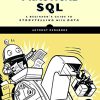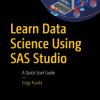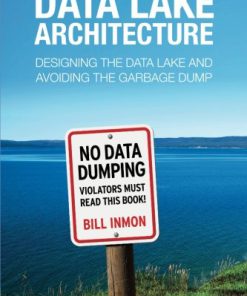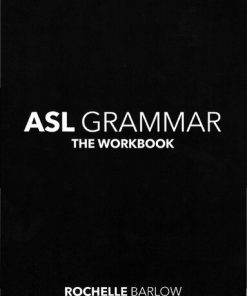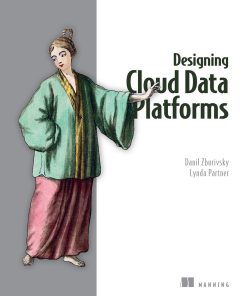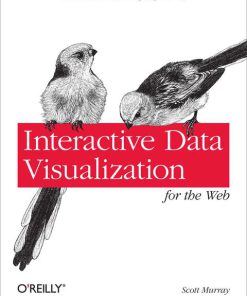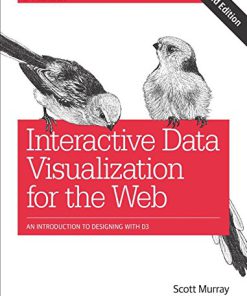Designing with Data 1st Edition by Rochelle King, Elizabeth Churchill, Caitlin Tan ISBN 1449334954 978-1449334956
$50.00 Original price was: $50.00.$25.00Current price is: $25.00.
Designing with Data 1st Edition by Rochelle King, Elizabeth F Churchill, Caitlin Tan – Ebook PDF Instant Download/Delivery: 1449334954, 978-1449334956
Full download Designing with Data 1st Edition after payment
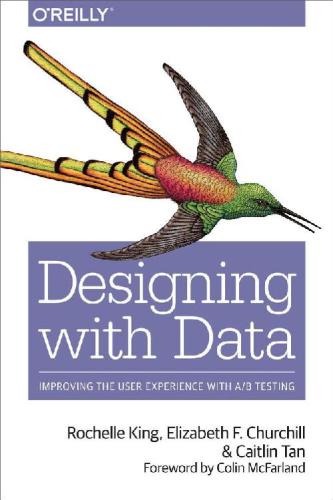
Product details:
ISBN 10: 1449334954
ISBN 13: 978-1449334956
Author: Rochelle King, Elizabeth F Churchill, Caitlin Tan
On the surface, design practices and data science may not seem like obvious partners. But these disciplines actually work toward the same goal, helping designers and product managers understand users so they can craft elegant digital experiences. While data can enhance design, design can bring deeper meaning to data.
This practical guide shows you how to conduct data-driven A/B testing for making design decisions on everything from small tweaks to large-scale UX concepts. Complete with real-world examples, this book shows you how to make data-driven design part of your product design workflow.
- Understand the relationship between data, business, and design
- Get a firm grounding in data, data types, and components of A/B testing
- Use an experimentation framework to define opportunities, formulate hypotheses, and test different options
- Create hypotheses that connect to key metrics and business goals
- Design proposed solutions for hypotheses that are most promising
- Interpret the results of an A/B test and determine your next move
Designing with Data 1st Table of contents:
1. Introducing a Data Mindset
This chapter introduces the concept of adopting a data-driven mindset, emphasizing how data has become integral to modern design processes.
Key Topics:
- Data as a Trend: The growing importance of data in design and decision-making.
- Three Ways to Think About Data: Understanding data from different perspectives (e.g., for improving business alignment, enhancing design, and optimizing user experience).
- What Does This Mean for You as a Designer?: How designers can benefit from using data in their work.
- Data Can Help to Align Design with Business: Understanding how data can tie design efforts to business goals.
- On Data Quality: The importance of ensuring high-quality, reliable data.
- With a Little Help from Your Friends…: Collaboration with data producers and consumers in a design environment.
- Data Producers: Those responsible for generating and collecting data.
- Data Consumers: The stakeholders who interpret and use the data.
- What If You Don’t Have Data Friends (Yet)?: How to start gathering and using data even without an established data team.
- Themes You’ll See in This Book: Key themes related to data-driven design that will be explored in subsequent chapters.
- Summary: A brief recap of the key ideas presented.
- Questions to Ask Yourself: Reflection questions to help readers assess their readiness for a data-driven design approach.
2. The ABCs of Using Data
This chapter delves into the foundational concepts and methods for using data effectively in design, covering types of data, methods of collection, and the basics of experimentation.
Key Topics:
- The Diversity of Data: Understanding the variety of data types that can inform design decisions.
- Many Dimensions of Data: Exploring how data can come in different forms and dimensions (e.g., qualitative vs quantitative).
- Why Are You Collecting Data?: Understanding the purpose behind data collection.
- When Is the Data Collected?: Timing considerations in data collection.
- How Is the Data Collected?: Methods of data collection.
- How Much Data to Collect?: Deciding on the scope and volume of data needed.
- Why Experiment?: The value of experimentation in data-driven design.
- Learning About Causality: Understanding the cause-and-effect relationships in data.
- Statistically Significant, not Anecdotal: The importance of basing decisions on statistical analysis rather than anecdotal evidence.
- Informed Opinions About What Will Happen in the Wild: Using data to predict real-world outcomes.
- Basics of Experimentation: Overview of the experimental design process.
- A/B Testing: Online Experiments: Introduction to A/B testing as a key method for online experimentation.
- Sampling Your Users Online: Methods for selecting representative samples from online user populations.
- Metrics: The Dependent Variable of A/B Testing: Key metrics used in A/B testing.
- Your Hypothesis and Why It Matters: Developing and refining hypotheses in the context of data.
- Running Creative A/B Tests: Conducting creative experiments to test design hypotheses.
- Data Triangulation: Using multiple data sources or methods to validate findings.
- Summary: A brief summary of the chapter.
- Questions to Ask Yourself: Reflection questions on how to apply these concepts in practice.
3. A Framework for Experimentation
This chapter presents a structured framework for experimentation, divided into three phases: Definition, Execution, and Analysis.
Key Topics:
- Introducing Our Framework: An overview of the framework for data-driven experimentation.
- Three Phases: Definition, Execution, and Analysis: A breakdown of the process for planning, executing, and analyzing experiments.
- The Definition Phase: Focusing on goal-setting and hypothesis creation.
- The Execution Phase: Implementing the experiment and collecting data.
- The Analysis Phase: Analyzing the data and drawing conclusions.
- Examples: Data and Design in Action: Real-world examples of experimentation in design.
- Summary: A recap of the framework.
- Questions to Ask Yourself: Key questions for readers to reflect on as they develop their experimentation strategy.
4. The Definition Phase (How to Frame Your Experiments)
This chapter outlines the steps involved in defining the parameters of an experiment and setting clear goals.
Key Topics:
- Getting Started: Defining Your Goal: Identifying the core goal of your experiment.
- Defining Your Metric of Interest: Selecting the metrics that will indicate success.
- Tracking Multiple Metrics: How to handle several metrics simultaneously.
- Competing Metrics: Managing situations where different metrics may suggest different conclusions.
- Building Hypotheses for the Problem at Hand: Crafting clear and testable hypotheses.
- Examples of Hypotheses: Case studies, such as Netflix’s transition from DVD rentals to streaming.
- Involve Your Team and Data Friends: Collaborating with the team to refine hypotheses.
- Which Hypotheses to Choose?: Deciding which hypotheses have the most potential impact.
- Consider Potential Impact: Weighing the significance of the possible outcomes.
- Summary: A summary of best practices for the Definition phase.
- Questions to Ask Yourself: Reflection questions to help readers refine their experimentation goals.
5. The Execution Phase (How to Put Your Experiments into Action)
This chapter covers the practical aspects of running experiments, from designing tests to analyzing user feedback.
Key Topics:
- Designing to Learn: Structuring experiments to gain valuable insights.
- Engaging Your Users in a Conversation: Creating meaningful interactions with users during experiments.
- Designing the Best Representation of Your Hypothesis: Ensuring the design tests what you want to learn.
- Understanding Your Variables: Identifying key variables in your experiment.
- Example: Netflix Wii: A case study showing how Netflix applied experimentation on the Wii platform.
- Revisiting the Space of Design Activities: Ensuring the experiment aligns with design goals.
- Avoiding Local Maxima: Recognizing and avoiding suboptimal solutions.
- Polishing Your Design Too Much, Too Early: The importance of not over-optimizing designs too early in the testing process.
- Summary: A summary of key strategies for the Execution phase.
- Questions to Ask Yourself: Questions to help you prepare for the execution of your own experiments.
6. The Analysis Phase (Getting Answers From Your Experiments)
This chapter focuses on analyzing the data collected during experiments to draw actionable conclusions.
Key Topics:
- Evaluating Your Results: Analyzing the outcomes of your experiment.
- Revisiting Statistical Significance: Understanding how to assess whether results are statistically significant.
- What Does the Data Say?: Interpreting the findings from your experiment.
- Expected (“Positive”) Results vs Unexpected (“Negative”) Results: How to handle both expected and surprising outcomes.
- Replication: The importance of validating your results with follow-up tests.
- Rolling Out Your Experience: How to determine whether to roll out your design after testing.
- Summary: Recap of the key analysis strategies.
- Questions to Ask Yourself: Questions to reflect on when interpreting your data.
7. Creating the Right Environment for Data-Aware Design
This chapter discusses how to foster a data-driven design culture within your organization.
Key Topics:
- Shared Company Culture and Values: Building a data-driven culture at all levels of the organization.
- Hiring and Growing the Right People: Building a team with data expertise.
- Establishing a Knowledge Baseline: Creating a foundation for data collection and analysis.
- Project Review Meetings: Ensuring data-driven decisions are embedded in project reviews.
- Summary: Best practices for creating a supportive environment for data-aware design.
- Questions to Ask Yourself: Questions to help you assess how to build a data-driven culture.
8. Conclusion
This chapter wraps up the book by discussing ethical considerations and the future of data-aware design.
Key Topics:
- Ethical Considerations: The ethical responsibilities involved in data experimentation.
- Design Experimentation vs Social Experimentation: Ethical differences between design-related and social experiments.
- Two “Power of Suggestion” Experiments: Case studies illustrating the ethical implications of design experimentation.
- Key Concepts: A recap of the most important ideas presented throughout the book.
- Asking Questions, Thinking Ethically: The importance of considering ethics when conducting design experiments.
- Last Words: Final thoughts on the importance of adopting a data-aware mindset for the future of design.
People also search for Designing with Data 1st:
visual vocabulary designing with data
a practical guide to designing with data
designing and training a model with extensive dataset
how to design data
what is design data
Tags:
Rochelle King,Elizabeth Churchill,Caitlin Tan,Designing,Data 1st
You may also like…
Computers - Databases
Designing Cloud Data Platforms 1st Edition Danil Zburivsky Lynda Partner
Computers - Programming
Computers - Computer Science
Uncategorized
Computers - Databases
Designing Cloud Data Platforms 1st Edition Danil Zburivsky Lynda Partner
Computers - Web Development
Interactive Data Visualization for the Web An Introduction to Designing with D3 1st Edition Murray
Computers - Databases
Computers - Programming


